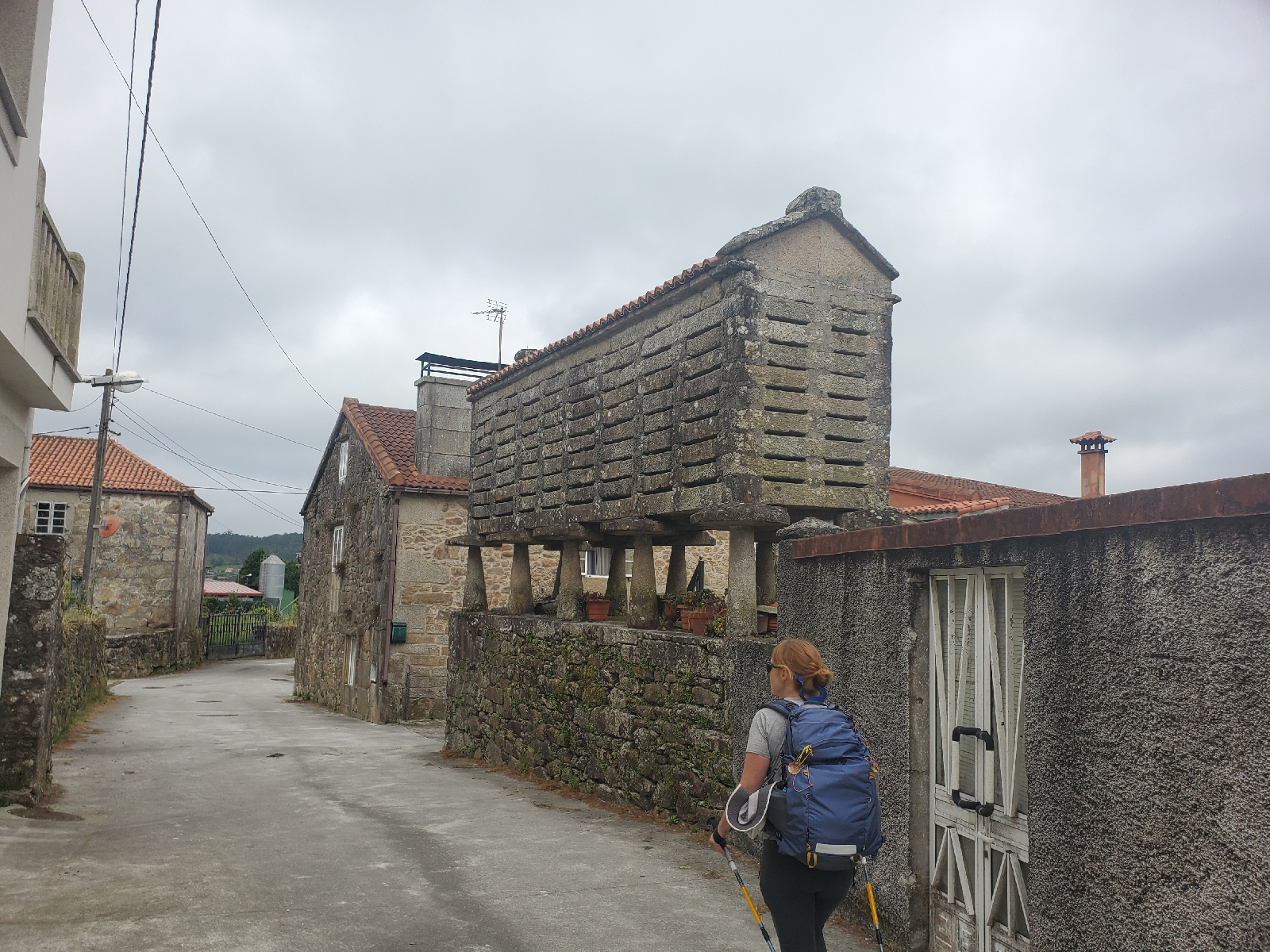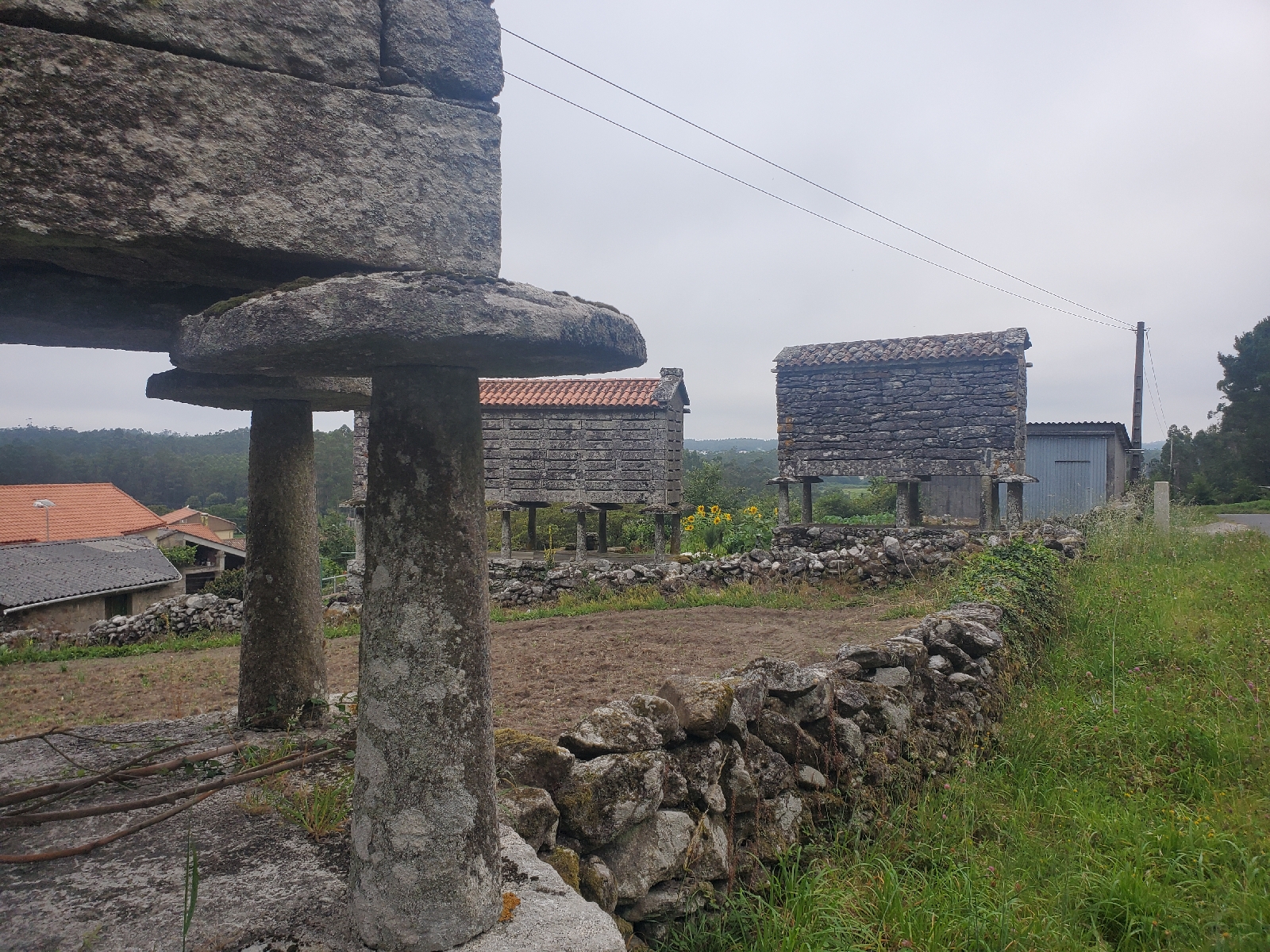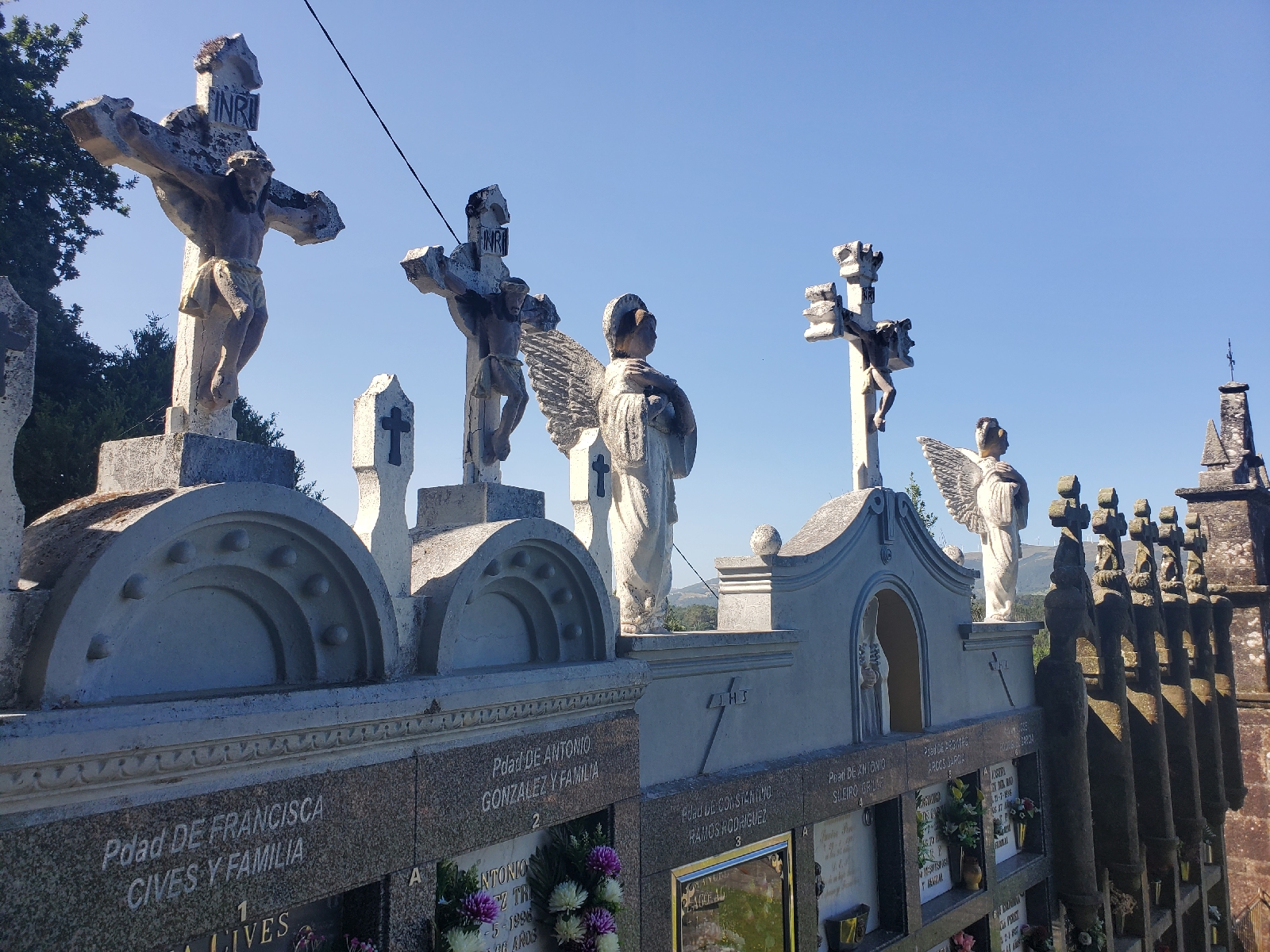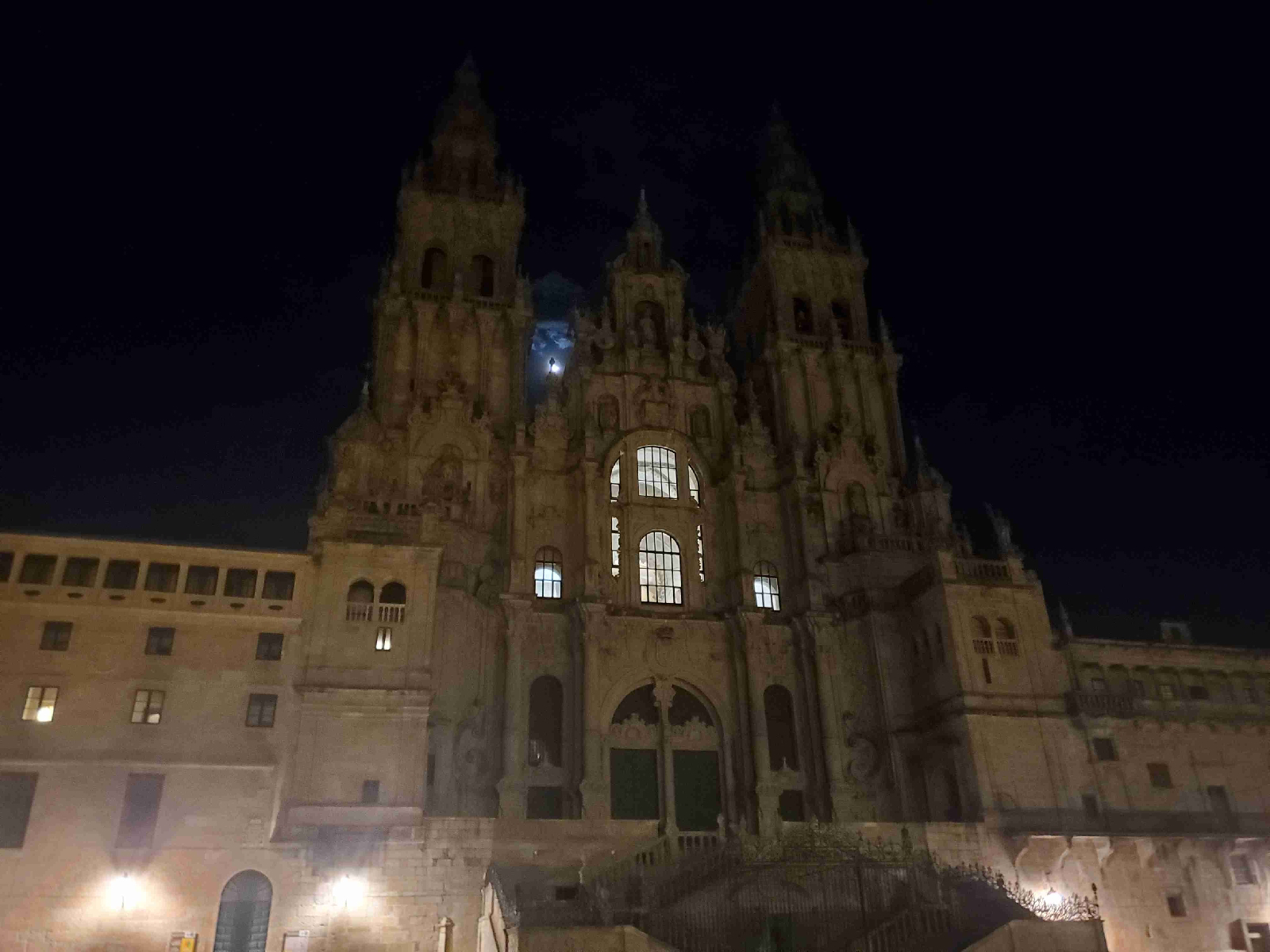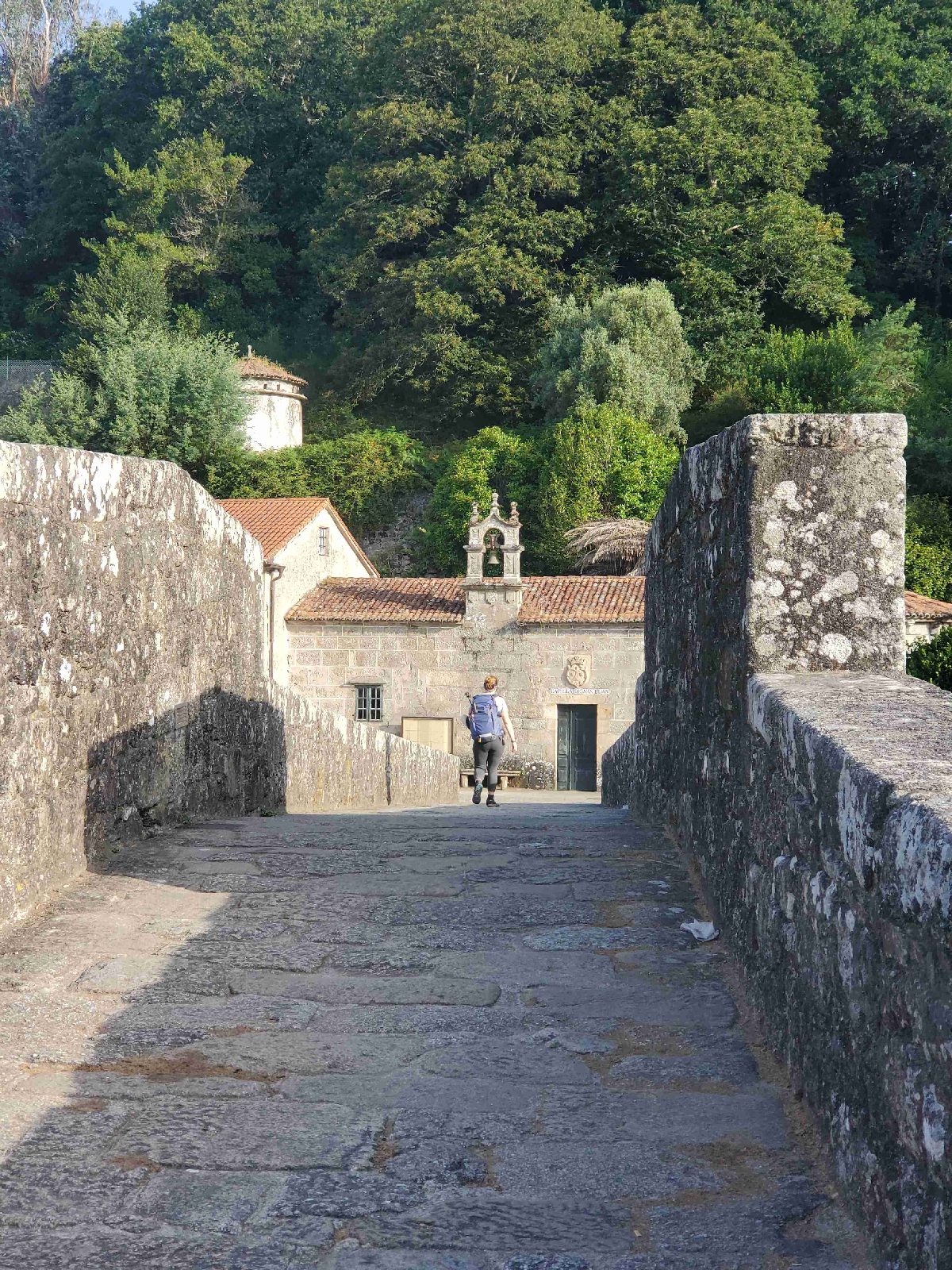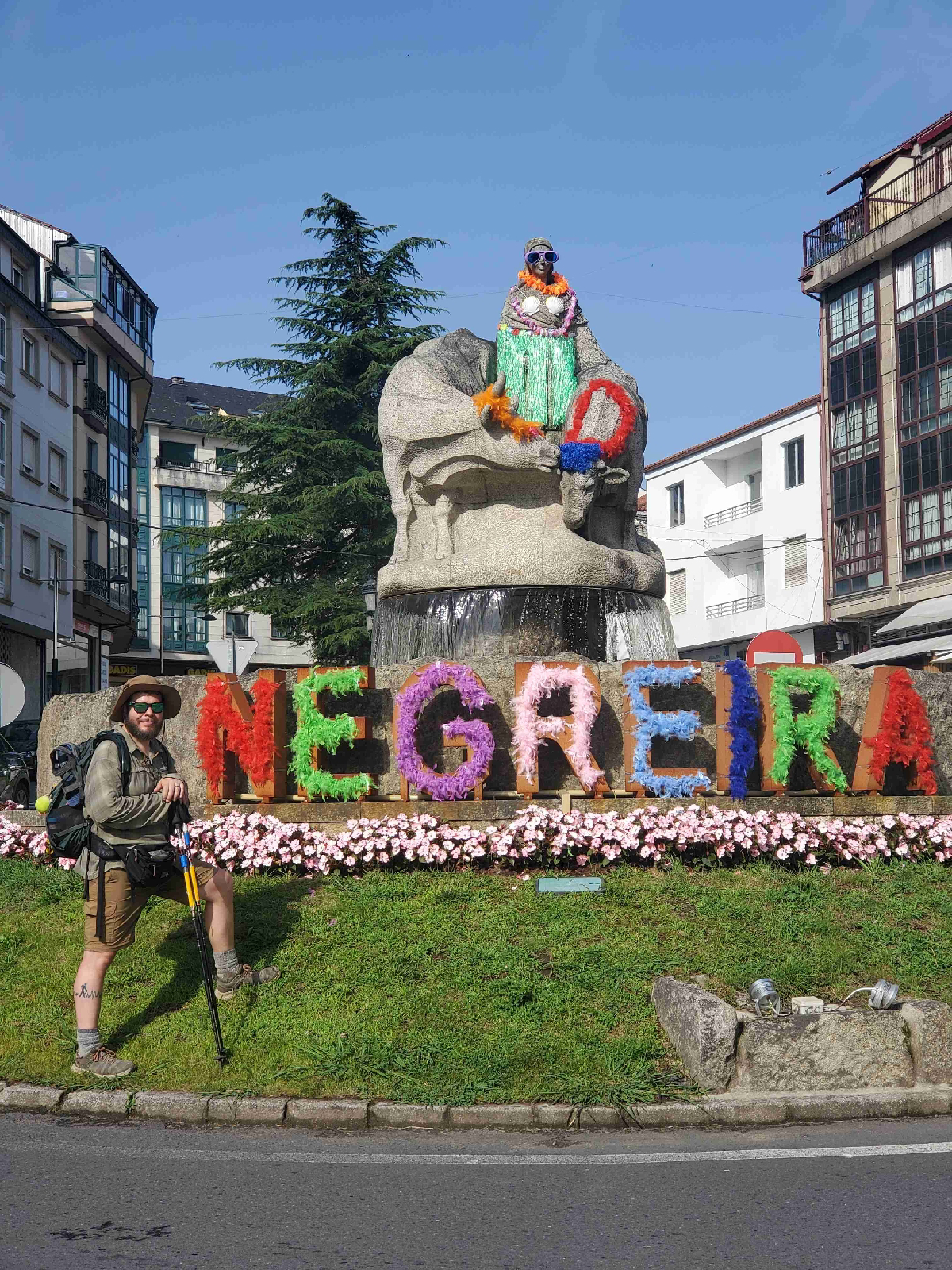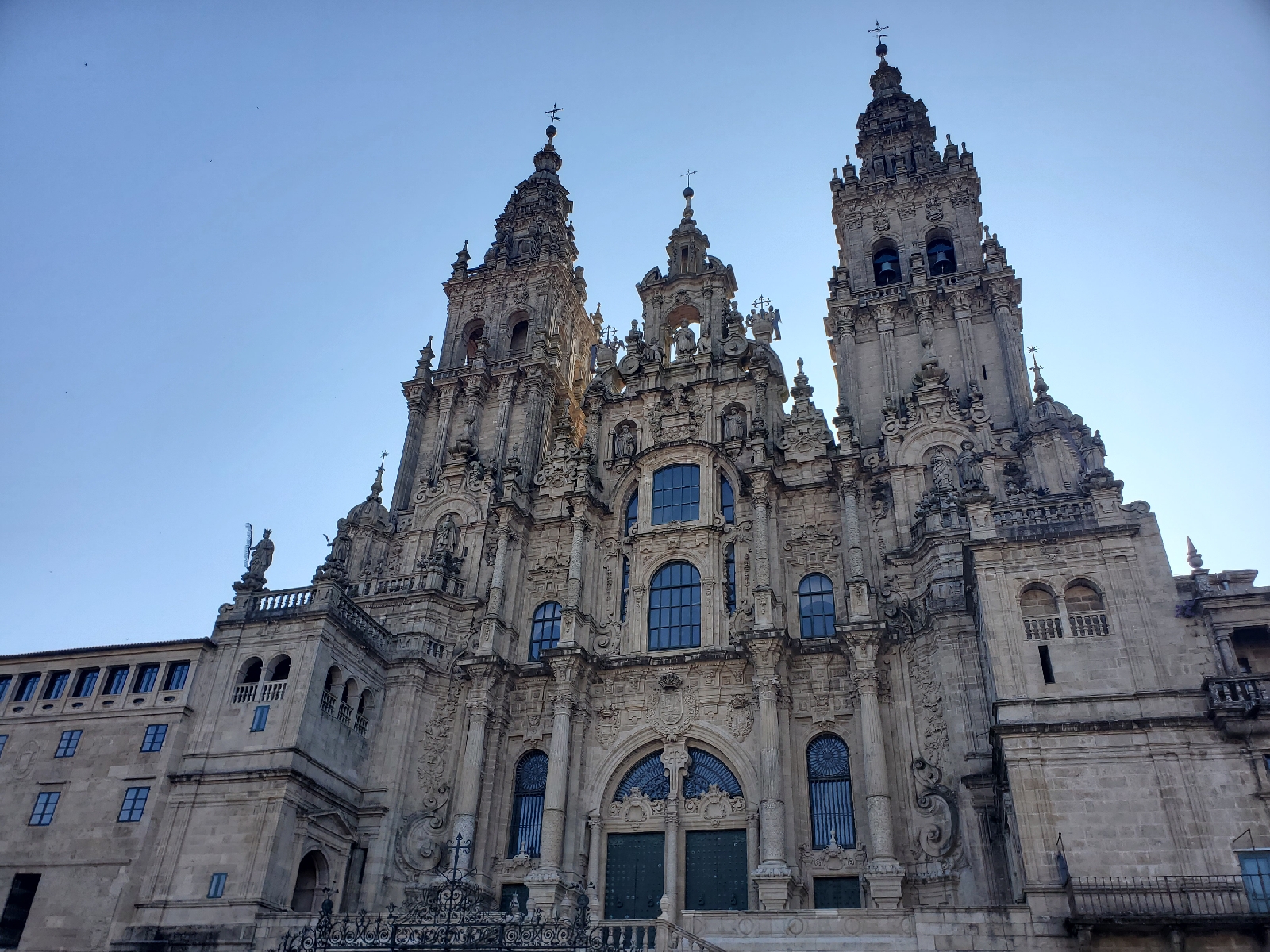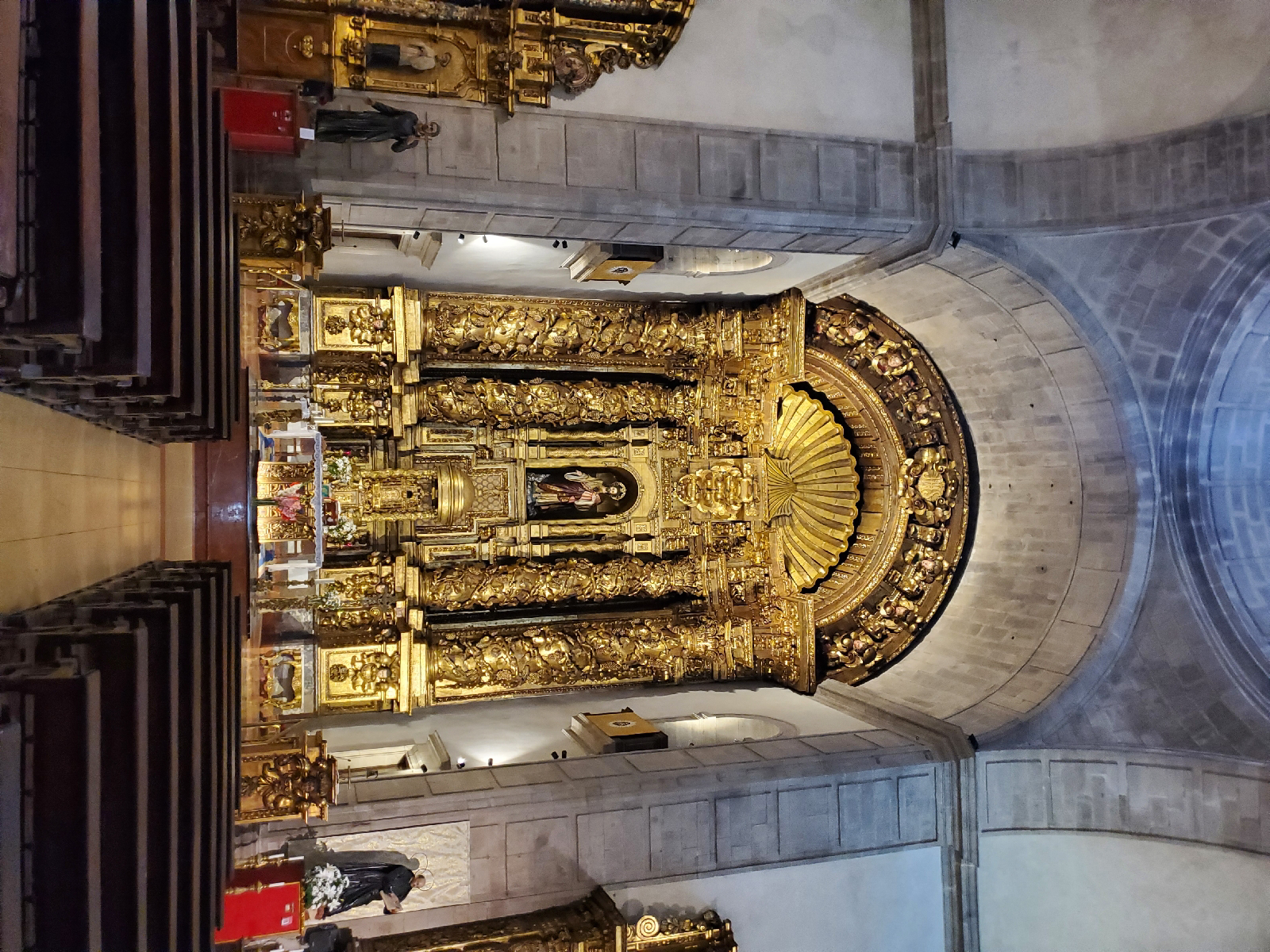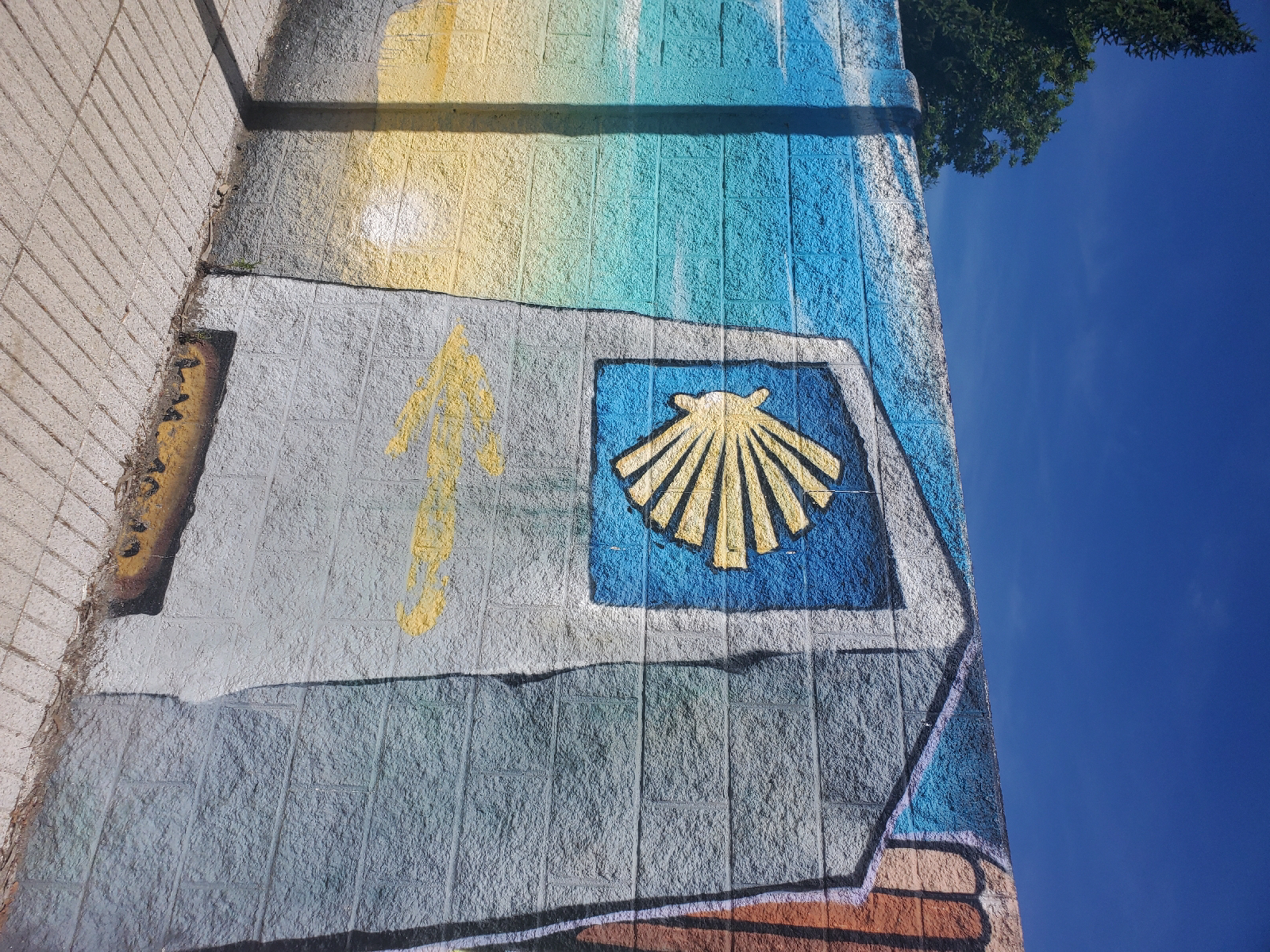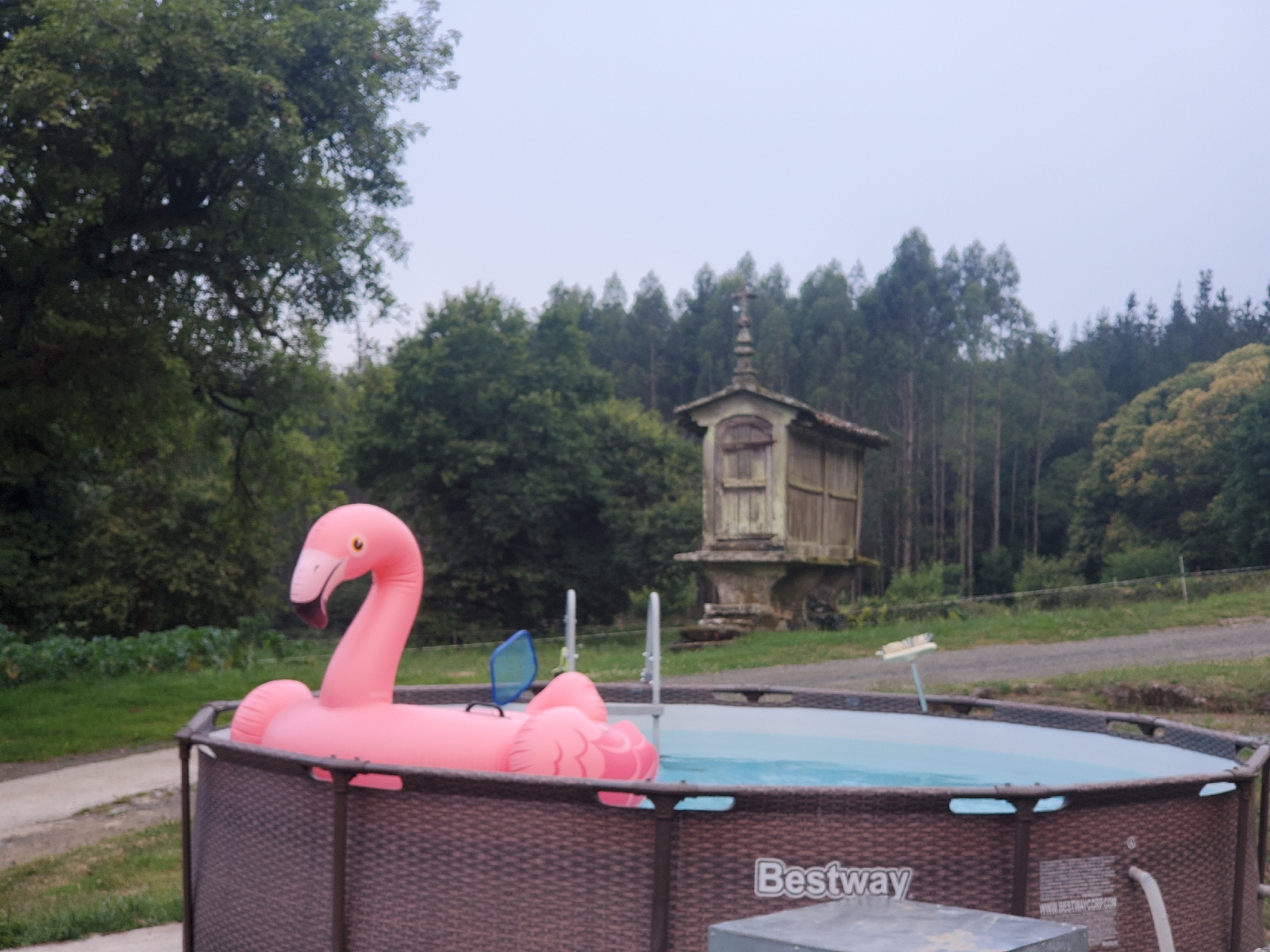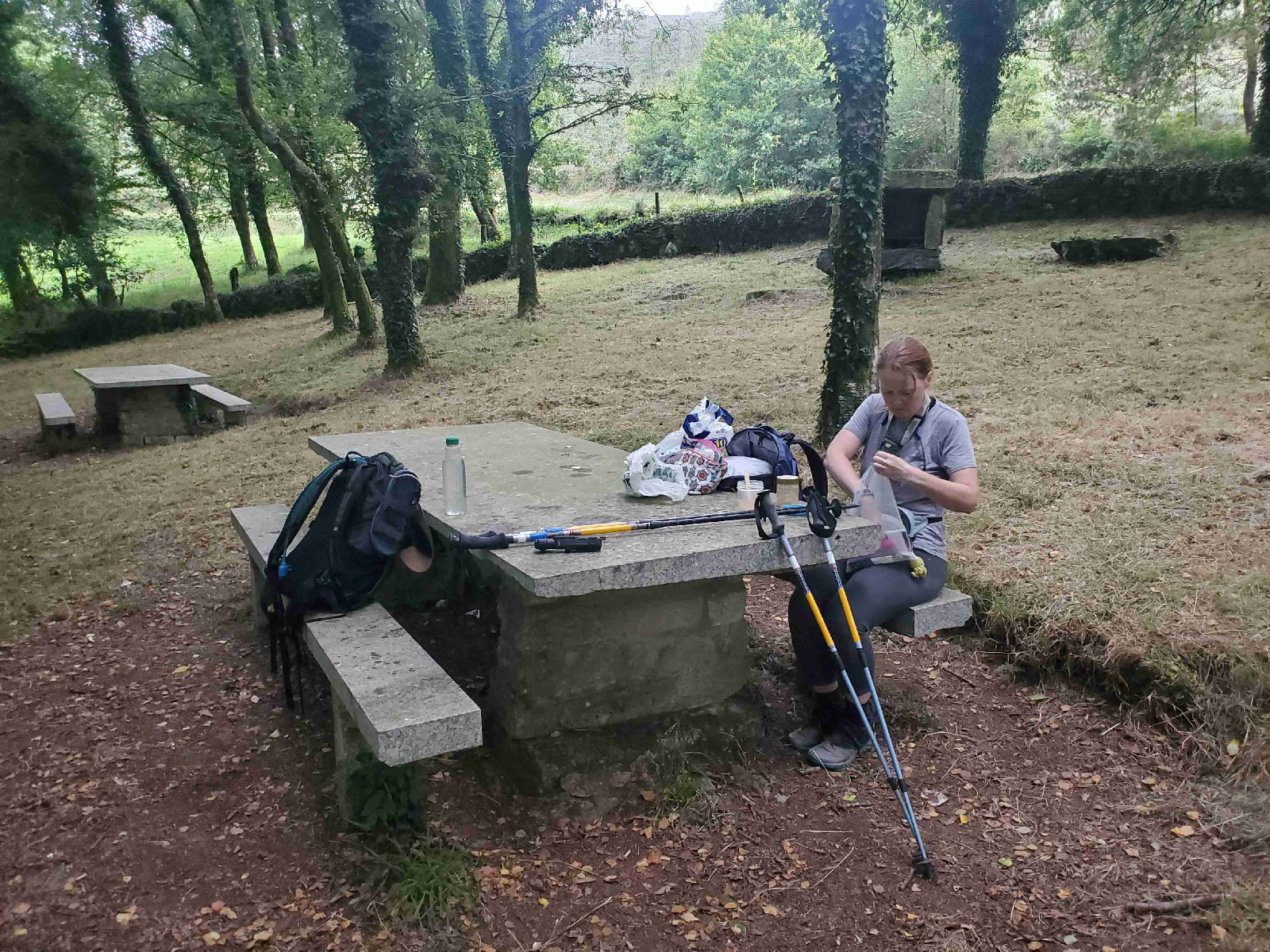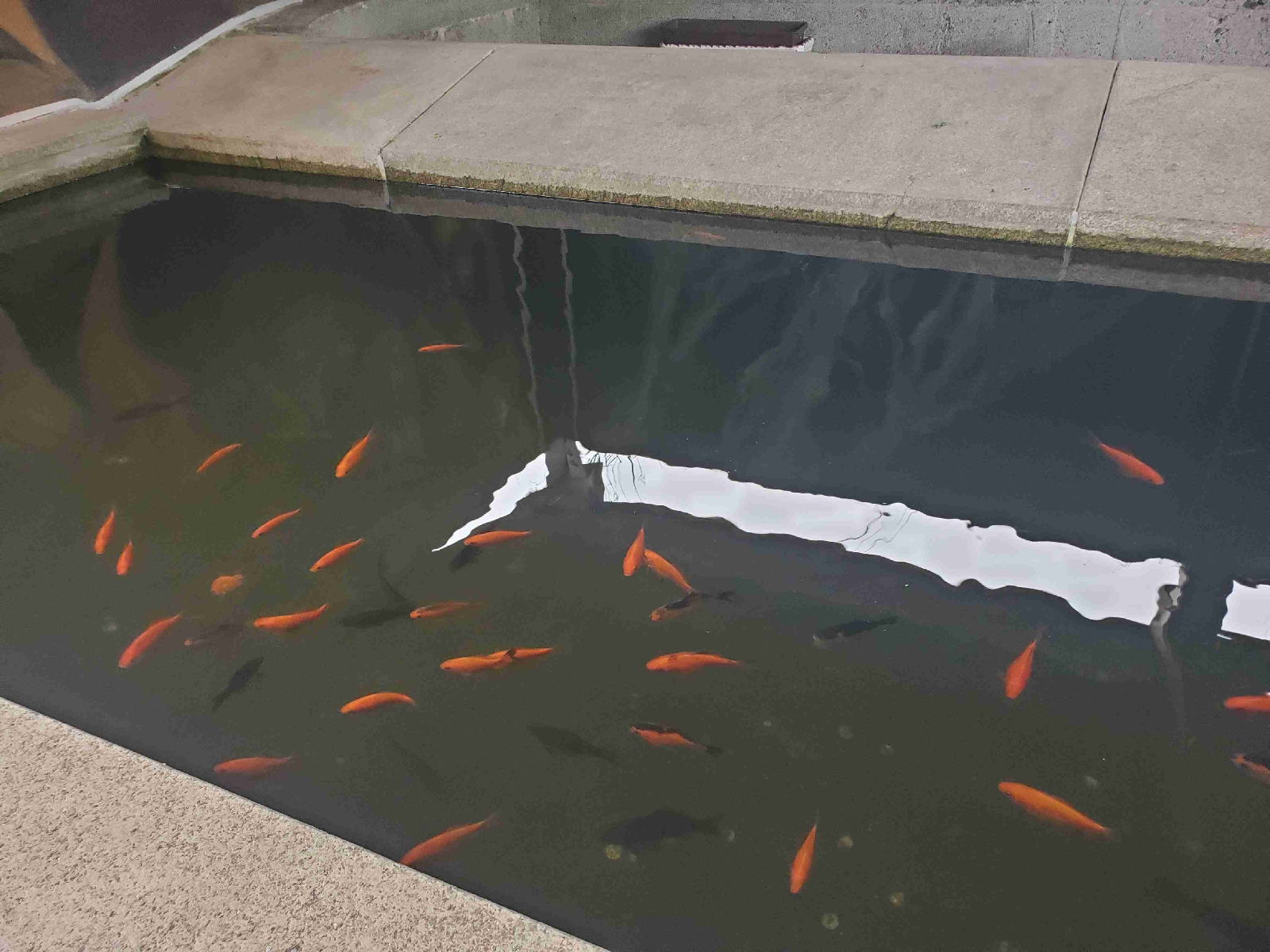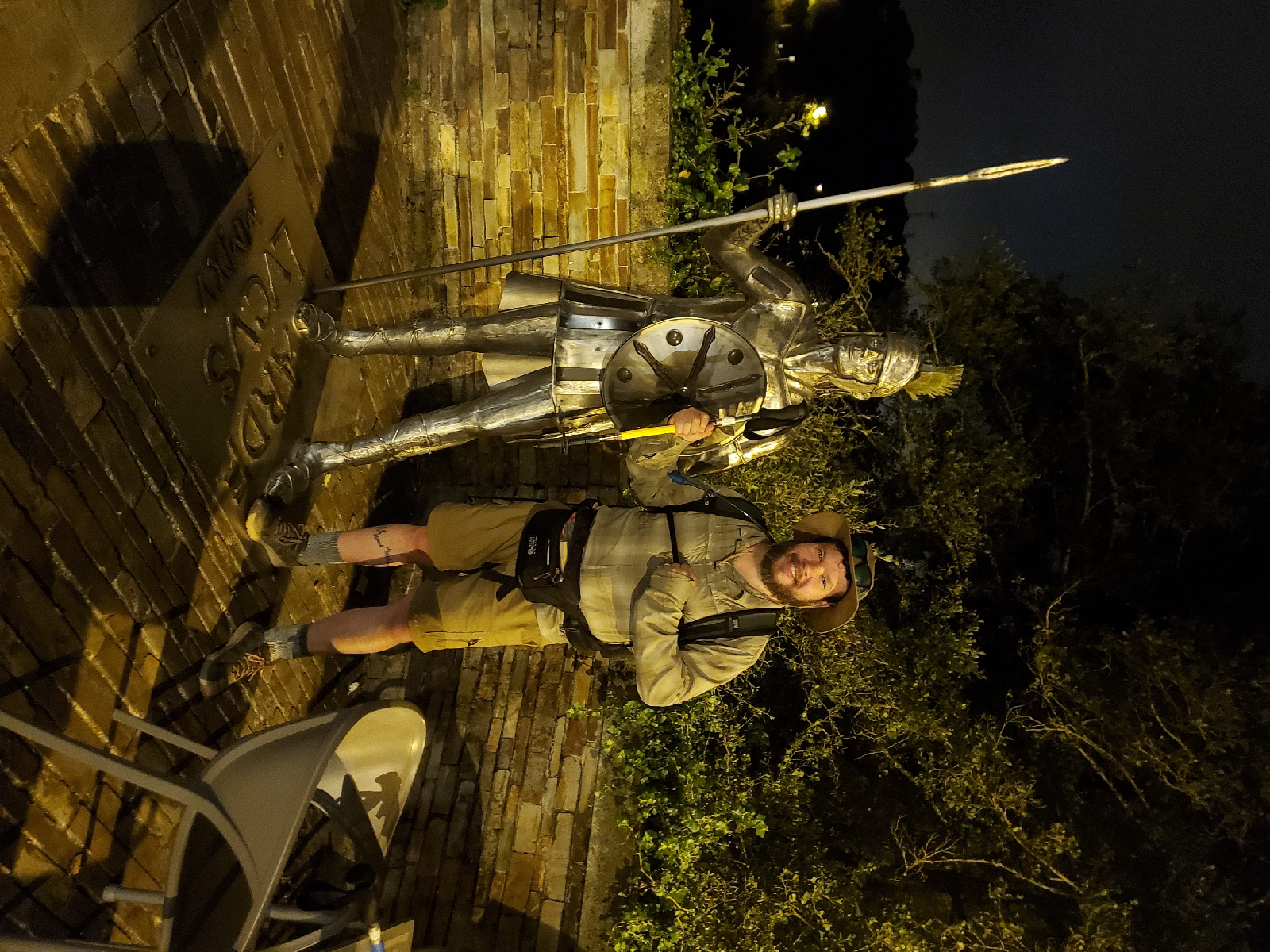As we prepared ourselves, the town of Olveiroa, bathed in the soft glow of its streetlights, revealed one of its most cherished treasures: the Hórreos. These ancient grain storage structures, perched on stone pillars to protect the harvest from rodents and moisture, stood proudly throughout the village, illuminated to honor their historical significance. The Hórreos are a testament to the ingenuity of the Galician people, blending functionality with timeless architectural beauty. Their stone bases and wooden or slate upper sections create a picturesque yet sturdy silhouette against the sky. Most of the Hórreos in this region were stone, although we passed several wooden ones around Lugo and Santiago de Compostela.
We left the sparsely populated town, our footsteps echoing through the empty streets as we ventured into the darkness. For a fleeting moment, the crescent moon and a smattering of stars offered their celestial company. However, as we continued our walk, an eerie fog rolled in, enveloping us in its misty embrace. The world around us transformed into a ghostly landscape, the fog muffling sounds and creating an atmosphere that was both serene and otherworldly. To heighten the fear, we just learned about the Galician lore of werewolves in the area. Fortunately, we were protected by the crescent moon, or so we hoped.
At 6 a.m., we found our first stop: a humble coffee shop that had just opened its doors. As we savored the warmth of our drinks, a curious cat lingered nearby, its eyes reflecting the dim light. Despite our attempts to coax it closer for a pet, the cat maintained its distance, content with simply observing us. As we prepared to leave, the feline seemed to adopt the role of a guide, leading us across the highway and along the trail for a short while. Perhaps it sensed the potential danger of the highway shortcut and wanted to ensure we remained on the safer path.
As dawn broke, the gray glow of morning light began to filter through the fog, casting the landscape in a surreal grayscale palette. The world around us seemed like an old photograph, with shadows and shapes emerging slowly from the mist. The atmosphere was almost cinematic, each step we took adding to the unfolding story of our journey.
We continued onward, our path weaving through small villages that dotted the countryside. While the previous day's hike had been characterized by endless cornfields, today was defined by the omnipresent Hórreos. Nearly every village we passed through boasted half a dozen or more of these structures, each one a silent sentinel of agricultural heritage.
Around midday, we reached an Albergue Cafe, its rustic charm inviting us in for a much-needed break. Our meal was simple yet satisfying: toast, eggs, bacon, orange juice, and a delicioud pastry. The bill came to a modest 10 euros, a delightful reminder of the affordability of rural Spain. As we ate, we reflected on the unique charm of the area and morning.
Our journey continued, and in the next town, we encountered the largest Hórreo of our hike. It stood proudly next to the Monastery of San Martiño de Ozón, its imposing size a testament to the agricultural wealth it once safeguarded. The monastery itself, with its ancient stone walls and serene cloisters, spoke of a long history intertwined with the land and its people. Founded in the 12th century, the Monastery of San Martiño de Ozón once served as a spiritual and agricultural hub, its monks tending to both souls and soil with care.
As the day drew to a close, we arrived in Moraime, our final destination for the day. The Monastery of Moraime, where we would spend the night, greeted us with its austere yet welcoming presence. The Albergue was no longer open at this location, so we had arranged for a private room, a luxury we greatly appreciated after the day's exertions. Our accommodation included a special tour of the Iglesia de San Xulián de Moraime, a privilege usually denied to the public.
The church's interior was a revelation, its ancient walls adorned with faded frescoes and intricate carvings. The dim light filtering through the windows created a tranquil and contemplative atmosphere. The history of the Monastery of Moraime dates back to the 12th century, its foundations laid by monks seeking solitude and spiritual fulfillment. Over the centuries, it had weathered the ravages of time and conflict, standing as a beacon of faith and resilience in the Galician landscape.
Exhausted yet fulfilled, we retired to our private room, grateful for the comfort it provided. Today had been our last long day of hiking, with only two more days separating us from our final destination, Finisterre. The thought of sleeping in tomorrow, followed by a shorter hike to As Lires via Muxía, was a welcome prospect. We intended to take full advantage of the cooler weather and the relative luxury of our private quarters, allowing our weary bodies to recuperate.



